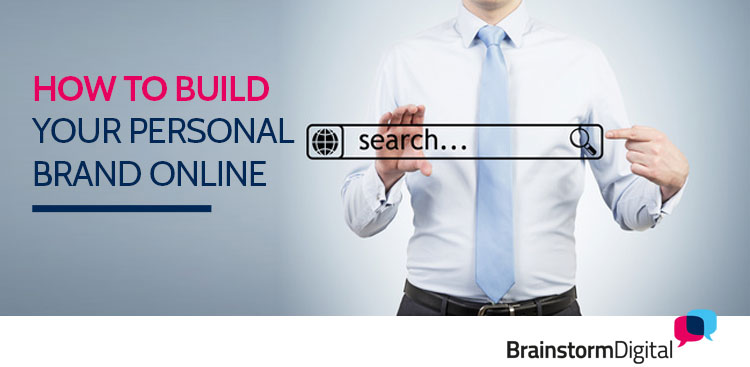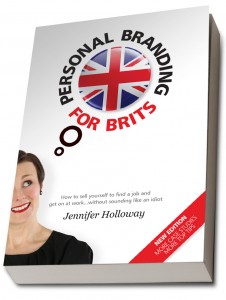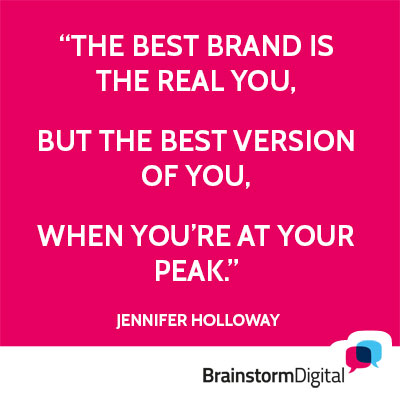Are you unclear how to use social media to advance your own career?
Are you worried you’ll appear pushy if you talk up your own achievements?
Do you want to do a better job promoting yourself online?
To learn how to promote a personal brand on digital media, I spoke to Jennifer Holloway, founder of Spark – Personal Branding for Business. She’s just published a second edition of her book Personal Branding For Brits, which includes new chapters on personal branding online and lots more case studies.
Her insights include:
- Why everyone needs a personal brand
- How to make your LinkedIn profile truly distinctive
- The secret to a great social media headshot
- How to getting the most effective recommendations online
- The one mistake business owners should not make on Twitter
And much more! Enjoy.
MIRIAM SHAVIV: Most people don’t think of themselves as ‘brands’. Why is this necessary?
JENNIFER HOLLOWAY: The term ‘brand’ is neither here nor there, it’s more about the act of realising you have things you are known for, and want to be known for, and creating some definition around that. It’s an untapped resource.
MS: Is a ‘personal brand’ something every employee needs to develop, or just people running their own business?
JH: Every single one of us already has a brand, conscious or not. It’s the things we’re known for, the things said about us.
Employees in a large organisation, whether or not they want to work their way up the ladder, will find getting the job done easier if they know their brand. If an individual is running a company, their brand often is the company – they’re what people are buying. For a student starting a career, knowing who you have to offer as well as what will make a difference.
Everyone can benefit from knowing what their brand is.
MS: What’s the price for not developing your personal brand?
JH: Missing out when people get ahead of you. People tell me they think their work should speak for itself and I say, “You’re right – but how’s that working for you?” Today it’s being known for who you are, as well as what you do, that gets you ahead.
MS: Are personal brands becoming more popular?
JH: In the US, it’s part of the culture. The ability to say, ‘Here’s who I am, here’s what I’m great at’ without embarrassment is in the DNA. In Britain, it’s not, but people are waking up to the fact that social media is making everyone more visible and connected. People are realising that other people are doing it, and if they don’t, they’re missing out.
I’ve been in personal brand since 2008. In the early days I’d mention it and people wouldn’t know what it is. Nowadays people are proactively asking for it.
MS: What’s the key to developing a personal brand?
JH: There are 6 key elements. Your brand is the things that make you what you are, from your values and drivers (the things that motivate you) to the way you behave, your skills and strengths, to your reputation and image.
It’s worth really thinking those things through and getting to specifics. People generally claim they know what their brand is, but describe it in very general terms. “My key value is honesty” – but what does that mean? They dry up. Honesty is lots of things. It’s about really digging down from the top-line stuff.
You need to reach real clarity on you as an individual, while still being authentic. It sounds twee, but if you can’t be a genuine brand I won’t buy you. People can suss out a fraud from 50 paces.
MS: Isn’t it a bit of a dichotomy? On the one hand, you need to be authentic, on the other hand you’re a “brand”….
JH: The best brand is the real you, but the best version of the real you, when you’re at your peak. That’s what you want to get into your head, make that your blueprint.
MS: Let’s talk about brand online. How do you make your personality shine through on LinkedIn?
JH: Stop shooting yourself in the foot by leaving your profile incomplete, posting the same old dross as everyone else and having no or a very bad photo. Instead, help me meet online the person that would come through my door if I really met you. Look and sound the same way. Talk about the same things.
When it comes to including a summary, instead of writing all about your career, pick one or two highlights. Then work out how your brand helped you achieve those things, and link that to the bits about your credibility. For example, I mention that I have appeared on BBC Breakfast and Sky because I was able to get journalists to buy into me – I’m good at making myself stand out.
All you’re doing is explaining some of the factual stuff but revealing some clues to who you are at the same time.
MS: How do you make your personal biography interesting?
JH:
Tell stories. I’ve seen one profile where a guy told a story about how, as a kid, him and his family went on holiday in a station wagon that broke down in a desert and that’s where they learned about team work. I learnt about him and it was so engaging!
It’s not just about plonking bits of personal info in there though. It’s about taking snippets of interesting stuff and weaving things together. Think back to the last time you met someone for the first time. Which bits engrossed them? When you talked about your company, they were probably less interested than when you told your great travel story – so take note of what works.
In terms of tone of voice, you want your LinkedIn profile to reflect what you’d say in conversation. People have too much distance between the language they speak and the language in which they write. Use the same words. Don’t get all starchy and formal.
MS: On LinkedIn, your recommendations are part of your brand. How do you get the best ones?
JH: The best recommendations come from credible people. Be careful who you ask. Don’t ask if it’s just your mate. The reader has to tell there’s distance between you and that person.
Too many recommendations look a bit desperate, like you’ve scatter-bombed everyone. Three looks good, six looks better. 12 are great, but once you get to 20-30, adjust our profile to drop off older or less relevant ones. Manage them!
Contact people personally to ask for recommendations. My biggest bug-bear is impersonal requests – it’s the rudest thing going! You’re asking me to give you my time and attention to write something for you but you can’t be bothered to personalise the message? That goes straight to the delete bin.
When you do personalise the request, be helpful. Tell them “it would be good if you could mention things like X,Y & Z”. They’ll often use your suggestion and bingo, you have what you wanted.
MS: Everyone knows you need a good photo on LinkedIn. How do you ensure it’s a good one?
JH: When I was thinking what my photo should be, I took time to work out beforehand how to best give clues to my brand. I searched through stock images of business women and up came pages with every way every woman had ever had her picture taken.
I looked at which ones jumped out at me and why – because they had something that appealed to me and my brand. So I replicated it.
Small details can be very powerful. The fact the woman in the picture had polished nails, was looking away, and has a slight smile – all these contributed to my impression and by giving similar clues I could create a similar impression.
Think about what you want to get across. Not everyone will get the same as you out of it, but you’ll increase the chances of them getting your brand.
MS: What’s the biggest mistake people make on Twitter regarding their personal brand?
JH: When people run their own business and they identify themselves as their company logo…. I don’t stop and read those. If I can’t see the person in the picture, and you have to use a logo, you need to make the words sound like a person. It can come across as very formal when people represent just a company
Although I put out a mix of tweet types – promoting my blog, promoting other people’s blogs,sharing useful info, the tweets that people respond to most are inevitably something quite personal like, “Just bought new nail polish – had to be red!” I’m known for my red nails, so though it was a bit of a frivolous thing to put,it was still relevant to my brand.
Be careful of the mundane though. Do I want to see a picture of someone’s dinner? Probably not. If you’re on Twitter with your business hat on, you need to find a balance.
MS: Email is a particularly hard medium in which to get the tone right. How do you do it?
JH: When the recipient reads your email, you want it to sound in their head as if you’re talking to them. Take the lead from who you’re corresponding with. With some people, you can be very pally over email, signing off ‘Ciao’ – but you wouldn’t do it with everyone…some need more formality.
It’s key to make people feel you have a nice relationship with them. You want yours be the emails they want to open first, because they’ll be fun.
MS: It sounds like you have to work very hard to sound natural!
JH: At first it takes a bit of thought but it soon becomes second nature. You can teach yourself to promote your brand consciously, then it becomes sub-conscious, as long as you know your brand and it’s authentic. It doesn’t mean it feels constructed.
MS: What’s your biggest recommendation?
JH: Put yourself out there, and see what reaction you get. People are so afraid they’ll sound arrogant or like an idiot. They tell me – “My head gets that this is important but my heart can’t quite let me promote my brand”, so they let it stop them. I say try it and see what you get. Tell people who you are and what you have to offer. Give your trumpet a little bit of a blow. I’d eat my hat if they laughed at you. And when they don’t, it will give you the confidence to do it again.










